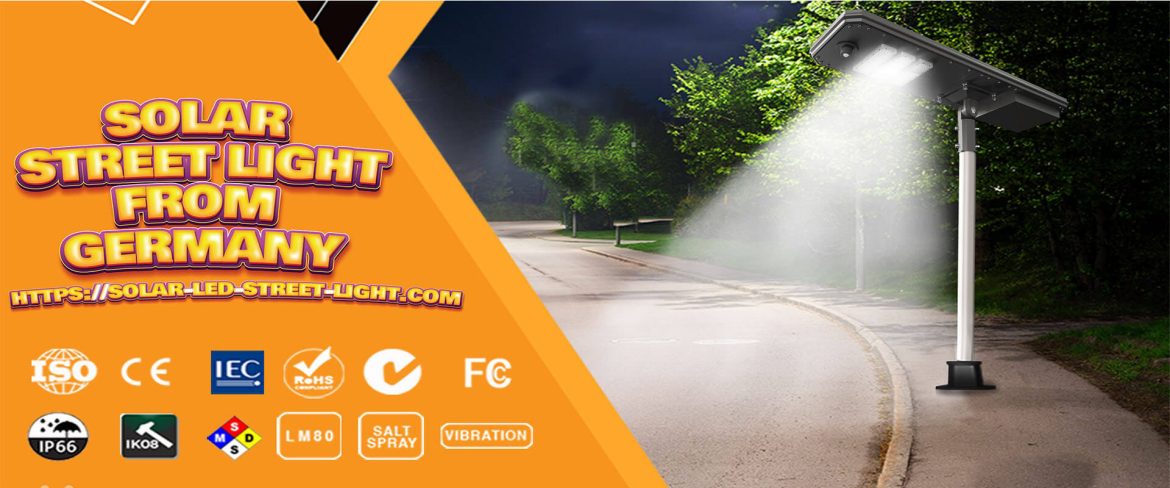In recent years, the solar street light market has grown exponentially. This is due to the many advantages that all-in-one solar streetlights have over traditional solar streetlights.
Solar streetlights are more energy efficient, require less maintenance, and are better for the environment. In this article, we will compare the mechanistic differences between the two types of solar streetlights and discuss the advantages of solar streetlights.
Advancements in solar-powered streetlights
Scientists and engineers in solar energy have produced significant improvements since their connection with the very first solar energy panel. Their efforts regarding solar energy have covered topics such as photovoltaic technology, CSP technology (concentrated solar thermal power), and solar-grid integration.
Technological advancements have aided in the modernization of all-in-one solar streetlight lighting systems. With time the setup is getting better, and now it’s available as integrated all-in-one solar LED Street lights with prolonged life and cost efficiency.
As solar streetlights have evolved, their structure and functionality have developed dramatically. Integrated all-in-one solar streetlights are an example of a recently developed variety of solar streetlights.
Mechanistic difference between all-in-one and traditional solar streetlights
The primary mechanism that solar streetlight systems use is grid-off and grid-tied.
The name off-grids explains that it’s not associated with any electrical supply system but operates at its full. It’s a self-sustaining system that generates power with the help of solar panels with the sun’s energy.
However, grid-tied systems can use solar energy and electrical energy from the grid to charge up batteries during the day and utilize the saved power at night to light the streets.
Off-grid and grid-tied systems are based on the zero-carbon emission concept to keep the environment clean.
The secondary difference is the design framework of solar streetlights.
The traditional solar streetlights have four parts, i.e., solar panel, light fixture, rechargeable battery, and pole. At the same time, integrated all-in-one solar LED streetlights have a compact framework containing a solar panel, controller, LED lights, sensor, battery, and sensors.
Advantages of All-in-one solar streetlight vs. traditional solar streetlight
Both integrated all-in-one and traditional solar streetlights are part of clean energy-based lighting systems. Still, all-in-one solar LED systems have many technological advantages over conventional setups.
Following are the features and advantages of all-in-one and traditional solar streetlights:
All-in-one solar streetlight
Various outdoor lighting installments, called all-in-one solar streetlights, have a fashionable and streamlined style. All the elements of this specific outdoor solar lighting fixture style are integrated and require only a single energy source. These streetlamps are available with and without a motion sensor. The light intensity of the lights without any motion sensors is greater and stays on from sunset to sunrise.
These solar streetlights feature infra-sensory motion sensors, causing the increase and decrease of light intensity based on motion. This helps conserve energy and is quite helpful in areas where few people are around.
All-in-one solar streetlights are a convenient and efficient way to light up streets and public spaces. The advantages that separate all-in-one solar streetlights are:
1. LED lamp, solar panel, lithium battery, and controller are all integrated
Integrated solar town lights have photovoltaic panels arranged as an independent unit, and a controller, LED lamps, and batteries are integrated. Since the solar panel comes as a separate unit, it can be configured to capture maximum energy by adjusting its direction.
The integrated unit’s sensors help adjust the light throughout the night. You can buy a 100% bright solar streetlamp or a sensor that dims the morning with time.
Integrated all-in-one solar streetlights have lithium batteries that charge three times faster than lead-acid batteries. It has a longer shelf life and decreases maintenance requirements.
2. Easy to install
An All-in-one solar lighting system is super easy to install. As everything is integrated into a compact form, it only requires a few minutes to mount on top of a pole or wall, facing the sun.
After installing, you need to switch the controller button ON, and charging will start. The day and night sensors will automatically turn on the lights during sunset and turn off the lights during sunrise.
3. No electricity cost
The integrated solar streetlight setup has solar panels and light fixtures that capture sunlight during the daytime and store it on lithium batteries.
These self-sustaining systems continue working a cycle of charging and giving fuel to light.
4. Low maintenance cost
Solar streetlights integrated with electrical circuitry combined in one spot are resistant to all types of weather and are weather-resistant, shockproof, rust-resistant, and maintenance-free.
Relatively minimal safety concerns exist due to the location of such systems’ components. They are all placed on the very top of their poles, and the overheating risk is reduced because the units don’t require any external wires or cables.
5. Eco-friendly & cost-effective
As it’s safe energy, there is no carbon emission, which means it is safe for the environment. Del illumination offers all-in-one solar streetlights at a reasonable rate than the rest of the market. You can contact them via the website.
Traditional solar streetlight
Traditional solar-powered streetlights function the same way as modern ones. One of the significant differences is that conventional streetlights use SMF lead-acid batteries, which are not as eco-friendly as lithium batteries. The average life of these batteries is only a few years.
1. Separate components (led lamp, solar panel, battery, controller)
Traditional solar streetlights feature various parts individually which need assembling. For example, lead-acid batteries generally require a battery box designed to rest on the pole as a separate unit or underground to protect it from overheating. Further, it would help if you had wired to interlink components.
2. More difficult to install
As there is more attention to detail in the installation process, only a specialist can complete the process. Every unit must assemble separately and requires interconnections with wires to the correct terminals.
All this makes the process difficult.
3. Electricity cost and expensiveness
These traditional solar streetlights connect to grids to power the light during rainy and snowy days, which involves electricity usage. It generates electricity bills and makes it unpleasant.
The components and installation procedure by experts cost more than integrated solar streetlights.
4. Higher maintenance cost
Risks of damage and theft are possible if the battery box is placed toward the bottom of the pole. Loose or broken external cables can cause overheating and lead to severe harm and accidents if not attached securely.
All this requires maintenance of lamps from time to time, only adding cost.
Conclusion
In conclusion, the all-in-one solar streetlight has many advantages compared to the traditional solar streetlight. The all-in-one solar streetlight is more durable, efficient, and easier to install.
Therefore, an all-in-one solar streetlight is the better option for those looking for a reliable and effective solar streetlight solution.

